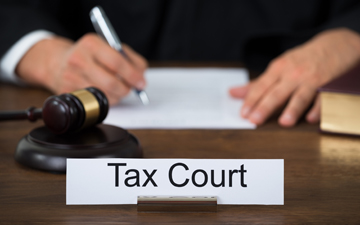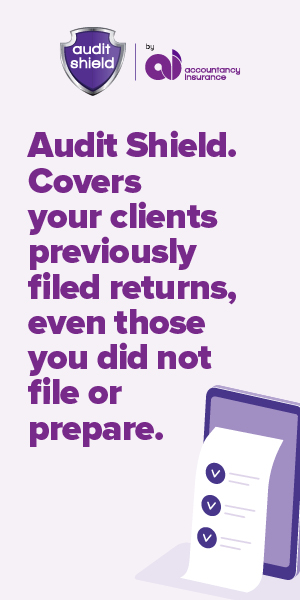Standards of tax statutes and tax caselaw must be respected in reply from CRA to taxpayers

The Hillcore Financial decision by the Tax Court Of Canada shows the importance of crafting tax pleadings that follow the rules says David J Rotfleisch
Introduction: Proper Reply in Pleadings before the Tax Court of Canada
Tax pleadings initiate cases that go before the Tax Court of Canada. These pleadings consist of the notice of appeal by the taxpayer and the reply by the Canada Revenue Agency. Outside of initiating the trial process, pleadings also play an important role in the lead up to trial in disclosing facts, reasons, and arguments that the parties will dispute. Additionally, pleadings set out the scope of discovery and can assist in possibly coming to an early settlement. Thus, to ensure that pleadings remain helpful to the case at hand and do not unduly delay or abuse the process, certain standards have been set out in statute and caselaw.
The decision in Hillcore Financial Corporation v. The King involves a motion to strike out the CRA's (the "Respondent") reply to the taxpayer's notice of appeal. This motion alleged that the pleadings set out in the reply were in breach of pleading standards to such an extent that the reply should be struck down without leave to amend. The Court allowed the motion and struck down the CRA's reply, however, leave to amend was granted.
Background and Timeline of the Case
The appeal in this case involves reassessment notices dated June 20, 2020, from the Minister of National Revenue (the "Minister" which is actually CRA) to the Appellant. These reassessments were for the taxation years ending on December 31, 2012, December 31, 2013, December 31, 2014, December 31, 2015, and December 31, 2017. The notices reassessed the Appellant for an additional $89.1 million in unreported income, as well as penalties under subsection 163(2) of the Income Tax Act ("ITA"). In response, the taxpayer filed an appeal to the Tax Court of Canada (TCC).
Per Tax Court of Canada Rules (General Procedure) ("Rules"), after the Notice of Appeal is filed, the respondent must file a reply to the Notice of Appeal within applicable time limits. Failure to do so result in the facts of the Notice of Appeal being presumed to be true for the purposes of the appeal. The Respondent's Reply in this case was filed on June 30, 2022 (the "Reply").
After the Reply was filed, the lawyer for the Appellant brought the motion, which was heard by Justice Lafleur of the Tax Court of Canada.
Court struck the reply but granted leave to amend
The Court's decision provides an extensive analysis of the aspects of a motion for striking a pleading. This involved three major questions:
- What are the applicable principles for striking a pleading?
- Are there grounds for striking the pleading in this case?
- Is the appropriate remedy in this case striking the pleading without leave to amend?
1) What are the applicable principles for striking a pleading?
The decision analyzes the applicable principles related to the rules of pleadings, striking pleadings, and the remedy for improper pleadings.
The rules of pleadings include general principles, such that pleadings should be concise, avoid repetition, and only contain material facts. As was found in the Tax Court of Canada's decision of Canadian Imperial Bank of Commerce v The Queen, pleadings must "be balanced and that there must be a sense of fairness in the pleadings." Additionally, the appropriate types of facts to be included in the Reply's pleadings were delineated. What is permitted are facts alleged by the appellant that are denied or admitted, as well as the assumptions of fact made by the CRA when making the assessment and any other material facts.
For striking a pleading the decision reiterates the high standard that is set out in section 53 of the Rules, which is reinforced through caselaw. When deciding whether to strike down a pleading, the court must take the facts set out in the pleading as true. If it is plain and obvious that the pleading fails to disclose a reasonable claim based on those facts, then the motion should be granted. There are several grounds on which striking all, or part, of the pleading could arise, which are that the pleadings are frivolous or vexatious, state irrelevant or improper facts, or are inflammatory.
The decision also reiterates the high threshold for granting the striking of a pleading without leave to amend as a remedy. To grant such a remedy the pleading must be incurable by amendment and that there must not be a scintilla of a legitimate cause of action. Additionally, as found by the Tax Court of Canada in Zelinski, amendments should generally be granted unless the moving party would be prejudiced in a way that could not be compensated through costs or other terms. This high burden of proof for showing that the pleading is incurable rests on the moving party.
2) Are there grounds for striking the pleading in this case?
The motion alleged that there are a variety of defects that within the Reply, which could not be saved through a leave to amend without prejudice to the appellant. These defects were analyzed by the Court using the following categories:
- overreaching denials and admissions,
- assumptions of mixed fact and law and conclusions of law,
- repetitive, colorful and vexatious language,
- vagueness, immateriality and disclosure of confidential information, and
- inclusion of evidence.
Each of these defects are sufficient grounds for striking pleadings either in part or whole.
A. Overreaching denials and admissions
The taxpayer alleged that seven paragraphs and one subparagraph of the Reply were overreaching denials or admissions. Meaning that these parts of the Reply went beyond what was admitted by the Appellant and consisted of the Respondent's own allegations. If found to be in breach of this standard, then the paragraphs and subparagraph ought to be struck. At the hearing the Respondent conceded that four of the paragraphs and the subparagraph were in breach and suggested amendments. The Court, however, found that one of the amendments was insufficient. Therefore, the two remaining paragraphs were also in breach of the standard and should also be struck down.
B. Assumptions of mixed fact and law and conclusions of law
Assumptions of fact made by the Minister when making assessments are allowed in the pleadings, however legal conclusions or statements are not. The Appellant alleged that throughout the 127 subparagraphs in paragraph 27 of the Reply there were multiple breaches of this standard. This decision reaffirmed the separation of questions of fact from the application of those facts to legal tests. In doing so, the Court found there were multiple instances where the Respondent had breached this standard, such as in conclusions related to whether the parties involved were at arm's length, and whether there was a transfer of property. Other subparagraphs were, however, upheld when it came to establishing fair market value and alleging that the taxpayer should have included an amount of income.
C. Repetitive, colorful, and vexatious language
Pleadings ought to be concise and avoid colorful or vexatious language. Being concise does not equate to length, but rather that repetitive pleadings ought to be struck. The Respondent conceded on the areas that the Appellant argued to be repetitive, however they did not concede on the issues of colorful or vexatious language. The Court disagreed with the extent of the concession on the repetitive elements, striking only some of the impugned subparagraphs. Noting the repetition of similar plans for different taxpayers, may seem repetitive, however the uniqueness of names and numbers in the plans separated them from each other and did not rise to repetition.
When deciding whether words or phrases arose to being colorful or vexatious and needing to be struck, The Court considered whether they expressed disapproval or evaluated the taxpayer's morality. This was distinguished from factual underpinnings assumed to be fact by the CRA, within the scope of which most of the impugned language fell. Nevertheless, subparagraph 27.67 was struck for stating that "Funds received by Negus were used to pay for Negus' living expenses" and footnote 8 was struck for referencing sham and the Minister's position.
D. Vagueness, immateriality, and disclosure of confidential information
Striking parts of pleadings due to immateriality requires a high bar to be met. According to the Appellant, Schedule B-12 included information that had no relevance, whereas Schedules A to F were not relevant for the current stage of the appeal. While the CRA conceded that the information in B-12, which was a bank account number, should have been redacted, they did not concede on the remaining schedules. Instead, the CRA argued that the assumptions of fact which the taxpayer was challenging in Schedules A to F were not immaterial. Furthermore, the CRA argued that as discovery had not been conducted at that stage, the Appellant did not have sufficient evidence to determine what assumptions of fact were relevant to the assessment.
The Court agreed with the CRA that questions of materiality were best left to the trial judge, but that two of the schedules, Schedules A and D, included confidential information and needed to be struck. These two schedules contained information related to third parties, which is allowed in pleadings if the information is relevant. Schedule A contained organization information for a group that the Appellant was part of and included confidential information of third parties and corporations. The Reply, however, failed to disclose how the confidential information was relevant. Schedule D included the assessment of another third party and was struck down due to a lack of indication of how the assessment was relevant to the assessment of the Appellant.
E. Inclusion of evidence
Including evidence in pleadings is improper. The Appellant sought Schedules B to F of the Reply to be struck. At the motion hearing the Respondent offered to amend schedules B-1 to B-42 of the pleading, however denied that subparagraphs 27.69 to 27.86 needed amending. The Court found that the concessions for Schedule B did not sufficiently address the inclusion of evidence and were to be struck down, however that the remaining schedules did not include evidence.
3) Is the appropriate remedy in this case striking the pleading without leave to amend?
The appropriate remedy decided in this case was striking the Reply with a leave to amend. The Court agreed with the Appellant's position that the Reply as is, would result in an unmanageable scope of discovery, and that the Reply would "either prejudice or delay the fair hearing of the appeal, or is scandalous, frivolous and vexatious, or is an abuse of the process of this Court." That due to the many deficiencies a simple amendment would not suffice, and the Reply needed to be struck in full. The Court, however, decided against the Appellant by granting a leave to amend and resubmit the Reply. This was due to the Court's finding that the Reply did disclose a reasonable basis for the Respondent's claim that the reassessments were correct.
Should there be some balance?
In following with earlier caselaw, this decision has restated the high threshold for withholding leave to amend when pleadings are struck down. The test that was used in this case, which came from the Federal Court of Appeal in Riabko v R, was whether the pleadings disclosed a 'scintilla' for a reasonable basis on which the claim in the pleadings could be made.
The focus given to this one aspect of section 53(1) of the Rules overrides the concerns of the other three bases for striking pleadings set out in that section. Based on the formulation of the test in this case even the most egregious pleadings might be allowed a leave to amend if they have a scintilla for a reasonable basis in the claim. This rigidity, if held to be true, would seemingly be an affront to the importance placed on pleadings being balanced and having a sense of fairness, which was also recognized in the overview of applicable principles in this decision.
This motion highlights the importance of thoughtful and diligent crafting of tax pleadings that follow the rules. These rules must be followed by both sides of a tax dispute. As seen in this case, improper information in pleadings could lead to further delays in the already lengthy trial process.
Additionally, being diligent in catching the improper use of information can help reduce the disclosure of business information irrelevant to the case and prevent the inclusion of vexatious language.
David J Rotfleisch, CPA, JD is the founding tax lawyer of Taxpage.com and Rotfleisch & Samulovitch P.C., a Toronto-based boutique tax law corporate law firm and is a Certified Specialist in Taxation Law who has completed the CICA in-depth tax planning course. He appears regularly in print, radio and TV and blogs extensively.
With over 30 years of experience as both a lawyer and chartered professional accountant, he has helped start-up businesses, cryptocurrency traders, resident and non-resident business owners and corporations with their tax planning, with will and estate planning, voluntary disclosures and tax dispute resolution including tax audit representation and tax litigation. Visit www.Taxpage.com and email David at david@taxpage.com.
Read the original article in full on Mondaq. Title image: iStock. Author photo courtesy Rotfleisch & Samulovitch P.C.









(0) Comments